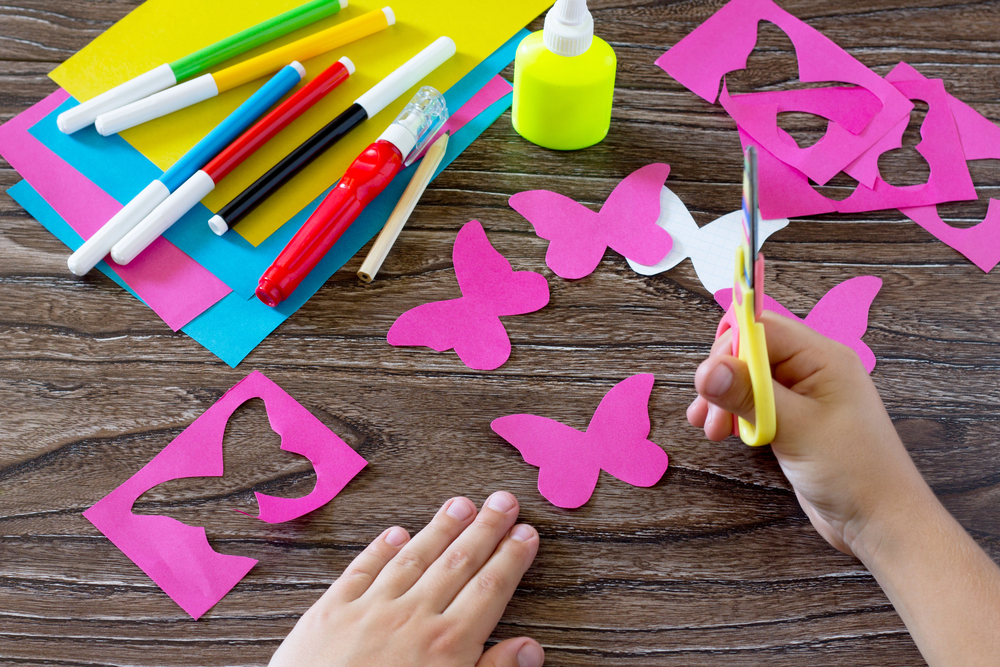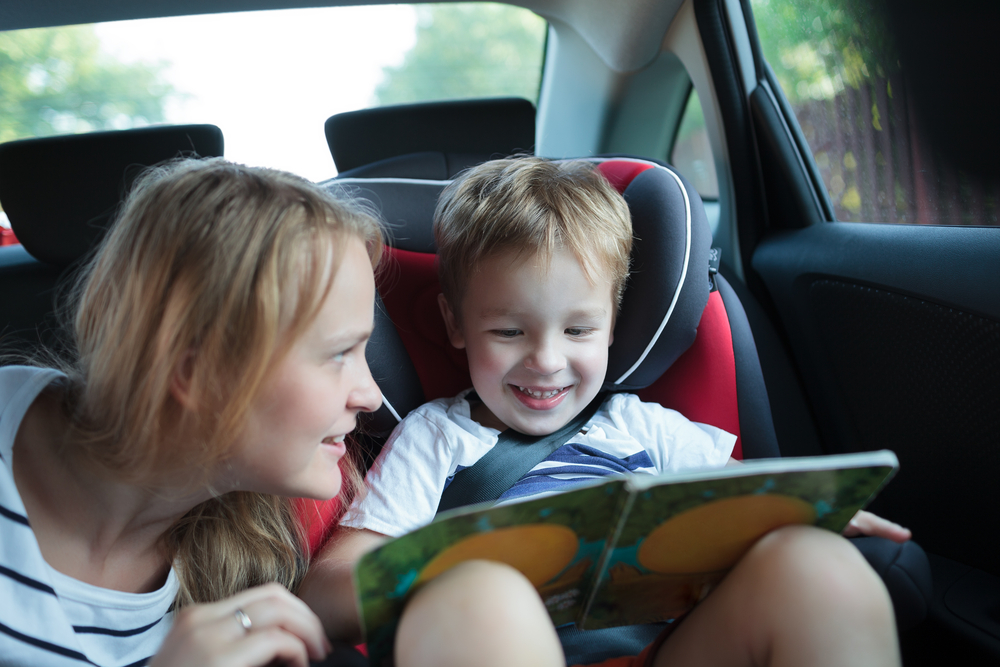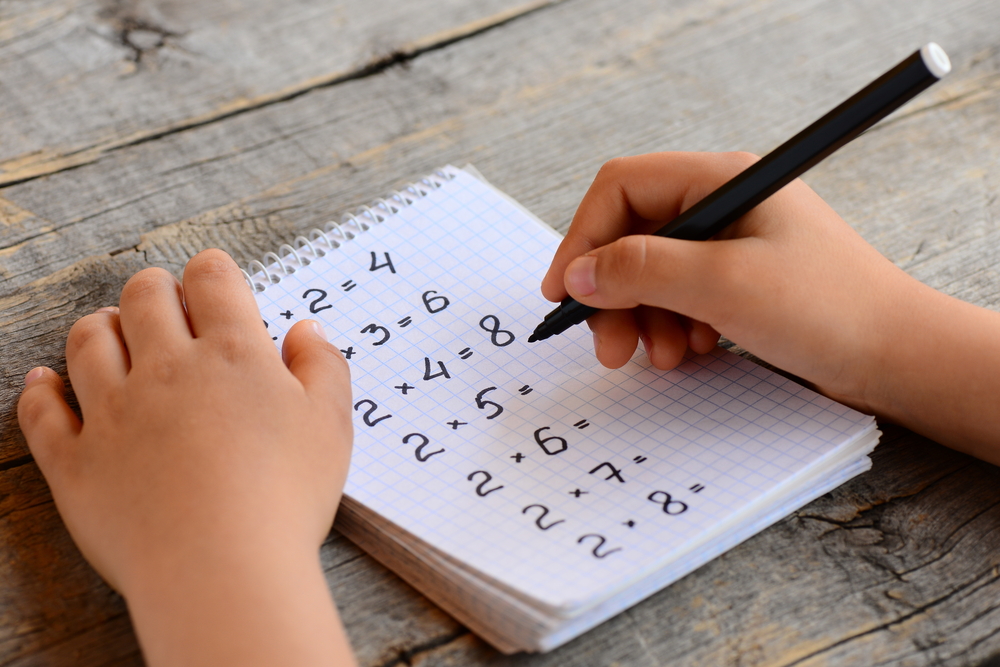Understanding biodiversity Worksheets for Ages 3-9
4 filtered results
-
From - To
Explore the wonders of nature with our "Understanding Biodiversity" worksheets designed specifically for ages 3-9! These engaging and interactive resources help young learners discover the variety of life on Earth, promoting awareness of ecosystems, habitats, and wildlife. Our printable worksheets encourage creativity and critical thinking through fun activities like coloring, matching, and sorting. Perfect for parents and educators, these STEM-aligned activities make learning about biodiversity enjoyable and accessible. Boost your child’s understanding of the environment while fostering a sense of responsibility for nature. Get started today and ignite a lifelong passion for protecting our planet’s rich biodiversity!
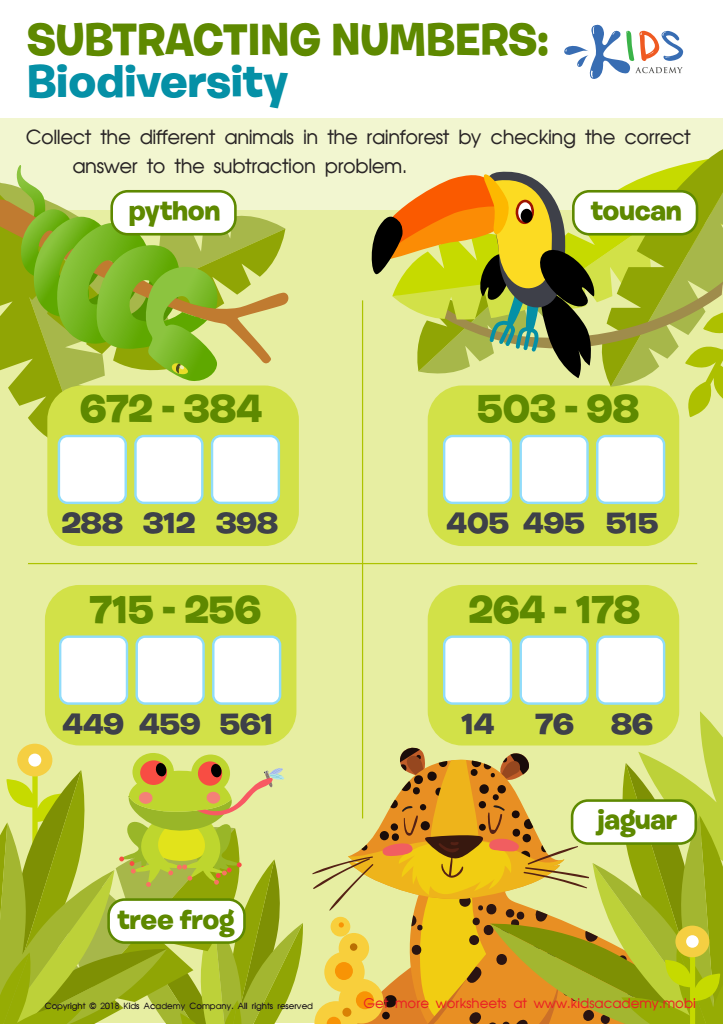

Subtracting Numbers: Biodiversity Worksheet
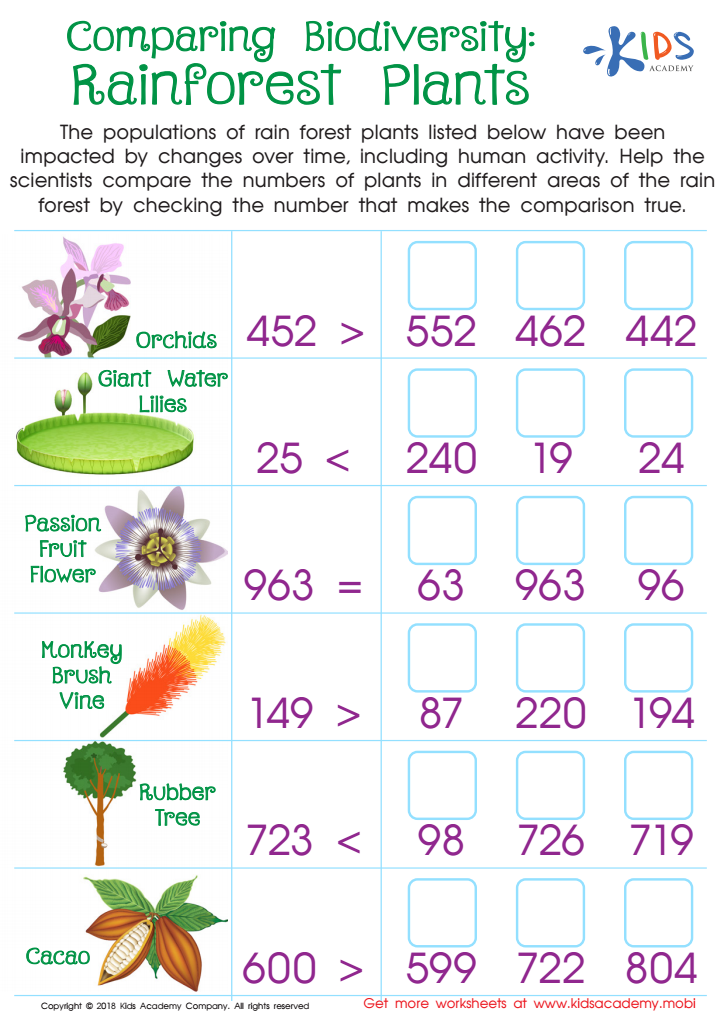

Comparing Biodiversity: Rainforest Plants Worksheet
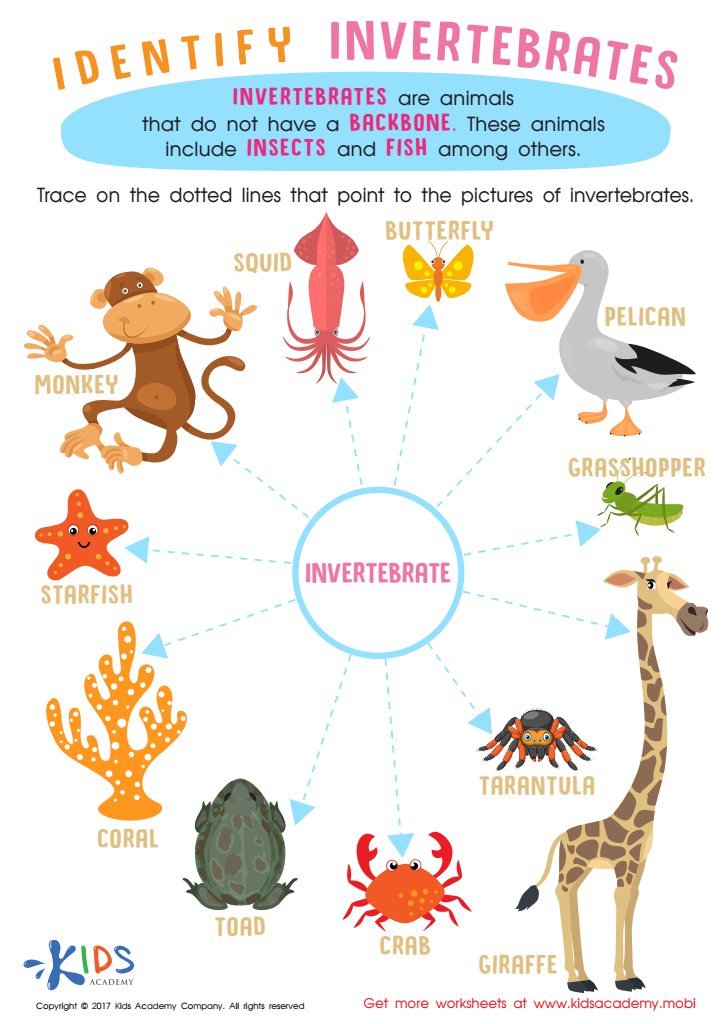

Invertebrates Worksheet for Grade 3
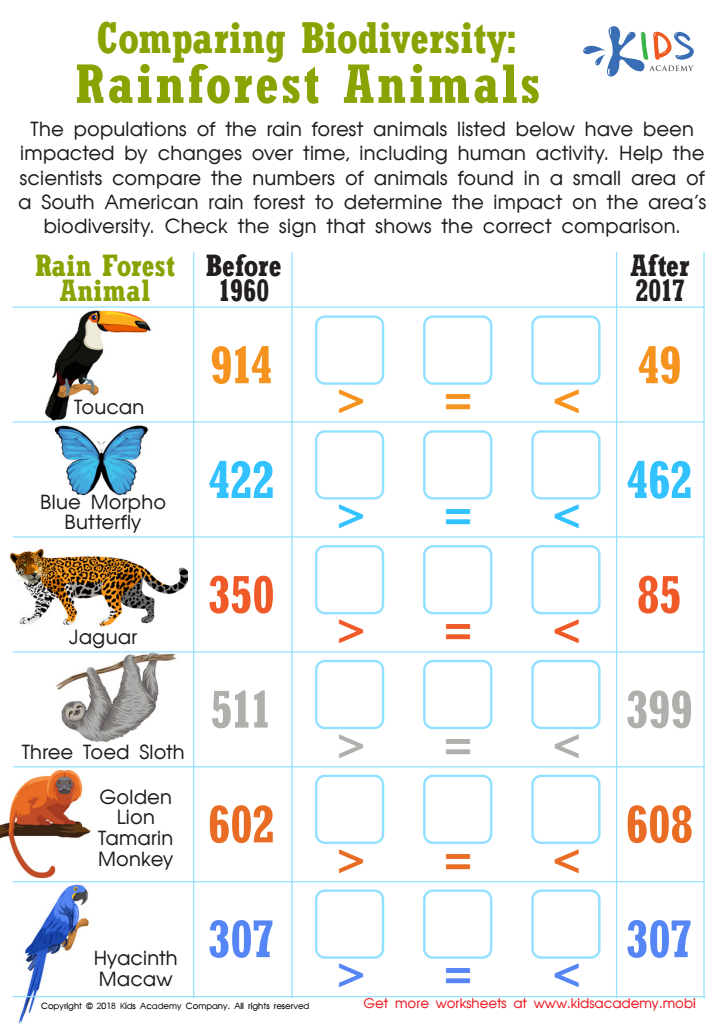

Comparing Biodiversity: Rainforest Animals Worksheet
Understanding biodiversity is essential for children ages 3-9, as it lays the groundwork for a loving relationship with nature. Teaching young children about the vast variety of life on Earth helps them appreciate the intricate web of ecosystems that support our planet. Engaging with stories, play, and hands-on activities, children can explore the importance of different species—plants, animals, and microorganisms—and how they interact within their environments.
Educational experiences focused on biodiversity enhance observational skills, curiosity, and critical thinking. Young learners become more mindful of conservation efforts, leading to responsible behaviors towards the environment. By fostering a sense of wonder about the natural world, teachers and parents can inspire future generations to make choices that safeguard ecosystems and promote sustainability.
Moreover, understanding biodiversity fosters emotional growth; children develop empathy as they learn to consider the needs of other living beings. This nurturing of connections encourages stewardship behaviors, making children more likely to advocate for animal and plant welfare. In essence, introducing the concept of biodiversity to young children empowers them to understand their vital role in the world, shaping compassionate and informed future citizens. Ultimately, cultivating an appreciation for nature can have far-reaching positive impacts on personal and collective well-being.

 Assign to My Students
Assign to My Students





